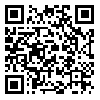Volume 15, Issue 1 (2015)
MCEJ 2015, 15(1): 86-96 |
Back to browse issues page
Download citation:
BibTeX | RIS | EndNote | Medlars | ProCite | Reference Manager | RefWorks
Send citation to:



BibTeX | RIS | EndNote | Medlars | ProCite | Reference Manager | RefWorks
Send citation to:
Toopchi-Nezhad H. The Simulation of Mullins’ Effect in Load-Displacement Hysteresis Loops of Fiber-Reinforced Elastomeric lsolators. MCEJ 2015; 15 (1) :86-96
URL: http://mcej.modares.ac.ir/article-16-9630-en.html
URL: http://mcej.modares.ac.ir/article-16-9630-en.html
1- Assistant Professor, Dept. of Civil Eng., Razi Univ.
Abstract: (7029 Views)
This paper briefly reviews Fiber Reinforced Elastomeric Isolators (FREIs) as a relatively new type of elastomeric bearings. In comparison with conventional Steel Reinforced Elastomeric Isolators (SREIs) that are reinforced with steel plates, FREIs utilize fiber fabric layers as the reinforcement material. The fiber reinforcement is employed to prevent the lateral bulging of elastomer layers when the bearing is subjected to vertical compression. Fiber reinforced isolators are categorized in two groups, namely, “bonded-“ and “unbonded-“ FREIs, depending on the boundary conditions at top and bottom surfaces of the bearing. The main objective of this paper is to simulate the lateral load-displacement hysteresis loops of unbonded-FREIs. In an unbonded-FREI, no bonding is provided between the bearing and its top and bottom contact supports. As such, shear forces are transferred via friction at the contact surfaces. When an unbonded-FREI is deformed laterally, portion of its contact surfaces roll off the contact supports, and the bearing exhibits a specific deformation called “rollover deformation”. As a result of rollover deformation, the effective lateral stiffness of the bearing is decreased significantly. This in turn improves the seismic isolation efficiency due to the increased base isolated period of bearing. The ultimate lateral displacement in an unbonded-FREI may achieve when the originally vertical faces of the bearing contact top and bottom supports. Lateral load-displacement response in an unbonded-FREI is characterized with a gradual softening (due to rollover deformation) that is followed by a stiffening behavior at the ultimate stage of lateral bearing displacement. Under a cyclic excitation, the response characteristics of the bearing during the first load-cycle are different than the subsequent cycles of the same load amplitude. This phenomenon that is specific to elastomeric materials is known as Mullins’ effect. In this paper an extended Bouc-Wen model is developed to simulate the lateral load-displacement hysteresis loops of unbonded-FREIs. The model captures the gradual softening and ultimate stiffening behavior in the load-displacement curve of the bearing, and addresses the Mullins’ effect in the simulation of hysteresis loops. The proposed model comprises two simultaneous coupled equations which employ six constant coefficients altogether. To determine these coefficients, the model is fitted to experimentally-evaluated load-displacement hysteresis loops of prototype bearings. The experimental loops are obtained from cyclic shear tests that are conducted on the bearing while it is subjected to constant vertical compression. In order to account for Mullins’ effect, an individual set of coefficients corresponding to unscragged loops (the first cycle of each displacement amplitude) are evaluated. The second set of coefficients is attributed to scragged response (subsequent cycles of each displacement amplitude) of the bearing. To simulate the load-displacement hysteresis loops, the proposed model switches between the first and the second set of coefficients depending on the unscragged or scragged state of the elastomer, respectively. A constraint is imposed on the model to assure its continuity when the model coefficients are alternated. Comparison between analytical and experimental results (shake-table test data) indicates that the proposed model is accurate in dynamic response simulation of the unbonded-FREIs studied in this paper.
Keywords: Fiber Reinforced Elastomeric Isolators, Hysteresis Loops, Mullins’ Effect, Bouc-Wen Model, Time history analysis
Article Type: Original Manuscript |
Subject:
---------|--------
Received: 2013/10/3 | Accepted: 2015/04/21 | Published: 2015/05/17
Received: 2013/10/3 | Accepted: 2015/04/21 | Published: 2015/05/17
| Rights and permissions | |
 |
This work is licensed under a Creative Commons Attribution-NonCommercial 4.0 International License. |







